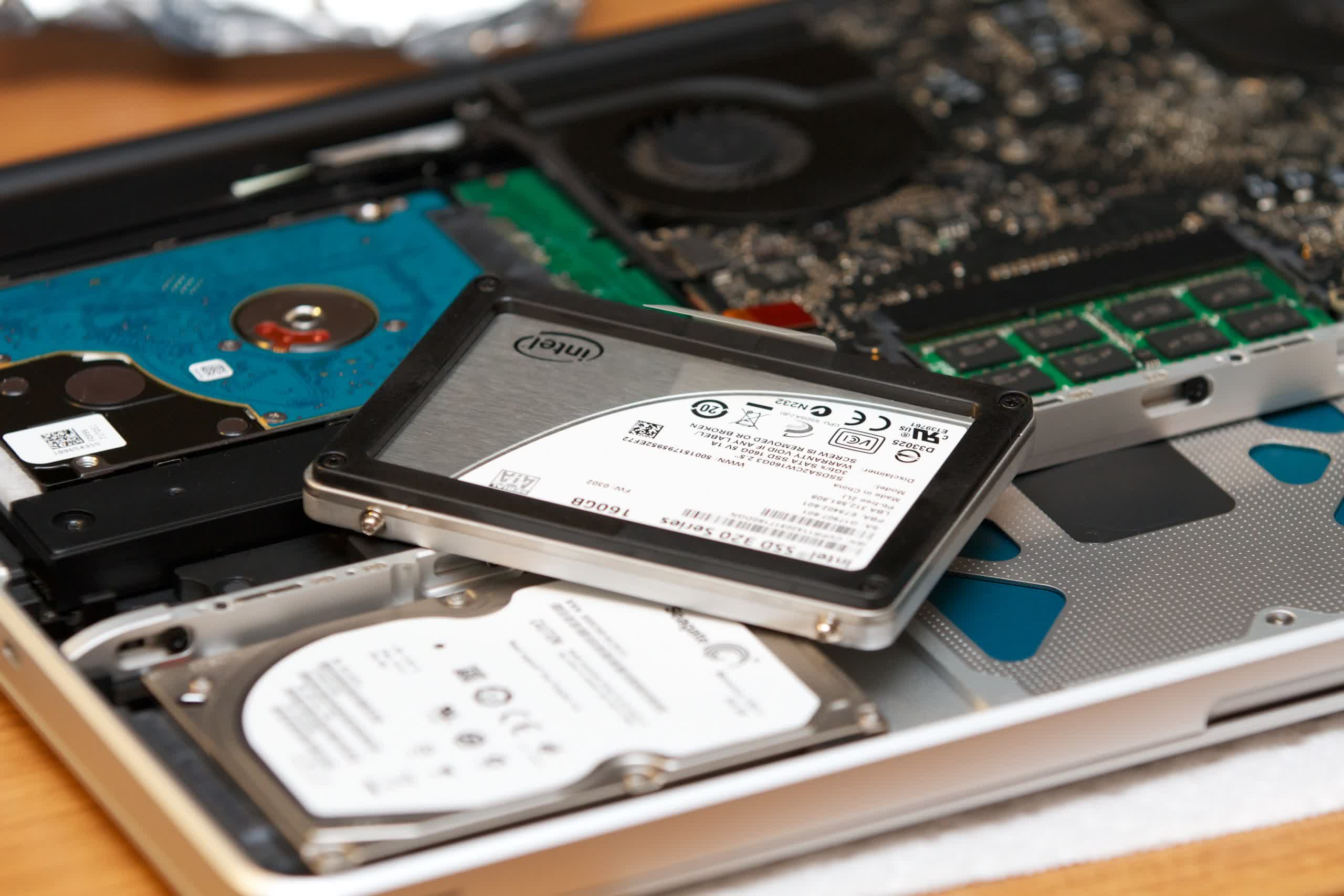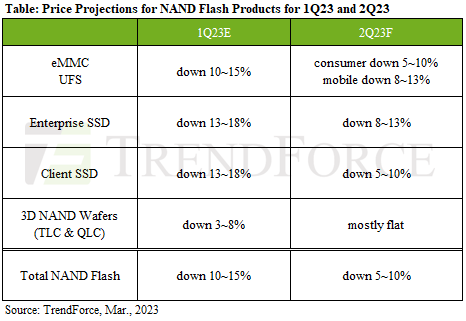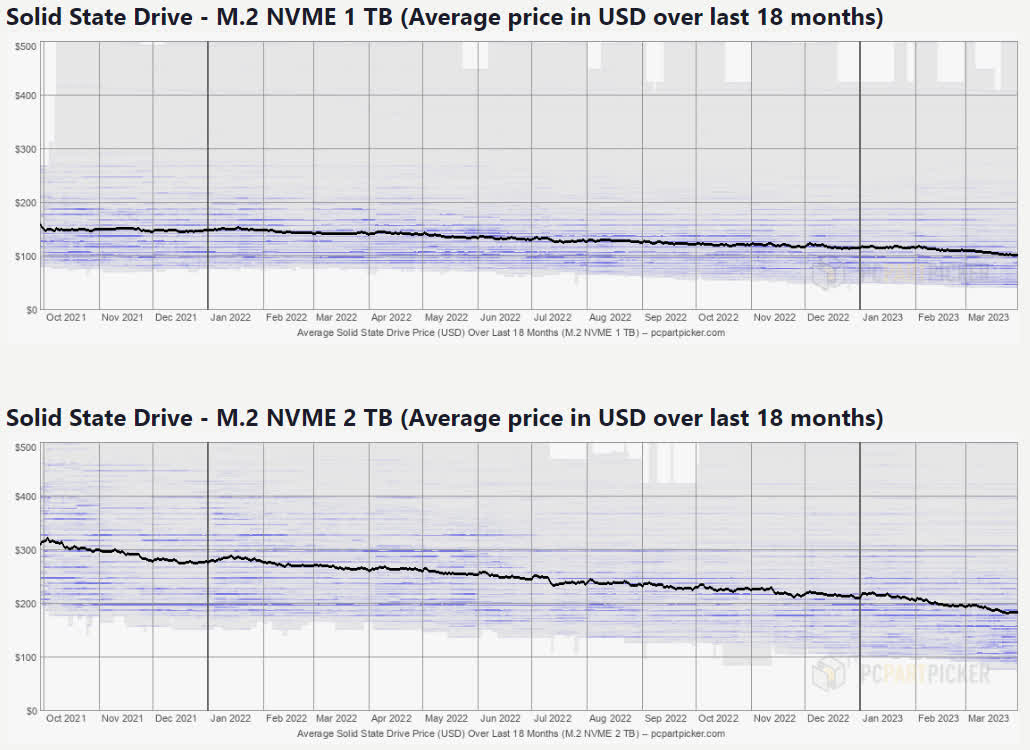In a nutshell: Over the last few months, the NAND flash oversupply hitting the current post-boom tech industry hangover has drastically sunk solid-state storage prices. The latest analysis estimates the trend will continue for at least a little longer and possibly through the rest of the year, though it may level off as suppliers try to get inventories under control.

TrendForce's latest report on NAND flash indicates that SSD costs will slide by another five-to-ten percent during the second quarter of 2023. If consumer demand stabilizes, prices may rebound around the fourth quarter. However, falling demand could delay recovery.
Since SSD prices plummeted around 30 percent during the first quarter of this year, many consumers have likely waited to see how low they could go. If you have to get one now, it probably isn't a bad investment, but those who can wait should recheck prices around the summer.
Models that saw significant price cuts recently, like the 1TB WD Black SN770 NVMe SSD or the Samsung 870 Evo SATA drive, have stabilized since TechSpot last checked at the beginning of this month. The SN770 is still $60 compared to $90 at the beginning of the year, and the 870 Evo is still $65.
Additionally, faster and more expensive models that hadn't budged all year may start to tick downward. The 1TB Samsung 990 Pro was $170 at the beginning of the month but is $120 now. The WD Black NS850X, which TechSpot called the best high-performance SSD for early 2023, has stayed at $100 but could also slip, according to PCPartPicker's tracking.

Flash wafer prices will likely go flat shortly, but it's unclear when that development will impact end consumers. Like many tech products, NAND memory suffered a drop in demand as the economy slowed down over the last year. The pace and duration of the current price trend will depend on suppliers' ability to cut production appropriately.
Additionally, TrendForce projects enterprise SSDs could see prices fall by 8-13 percent over Q2 – steeper than consumer SSDs but still slower than their 13-18 percent Q1 drop. Mobile storage prices in Q2 could also see price drops similar to SSDs.
Image credit: Yutaka Tsutano
https://www.techspot.com/news/98147-trendforce-ssd-prices-havent-hit-rock-bottom.html
